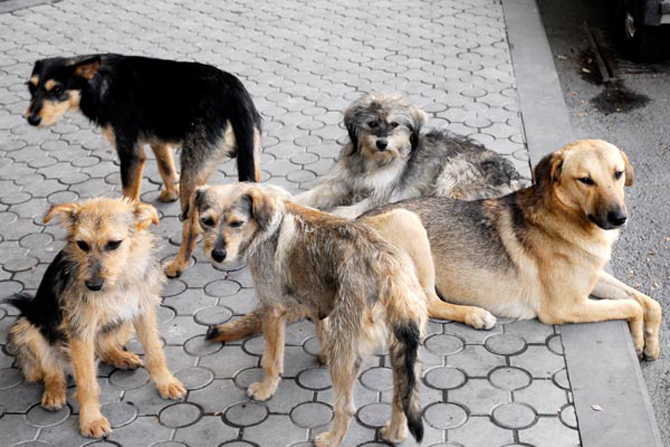Special for the Armenian Weekly
The future of pet care has looked pretty bright in the West for quite some time now. According to the Washington Post, in 2015 alone Americans spent $11 billion on products and services for their pets—three times what it was in 1996. Purebreds, strays, you name it… we might just be the most pet-obsessed generation yet.
But what does the relationship between people and pets look like as one moves eastward, into the former Soviet bloc?
In its modernity, Armenian society has bred a peculiar distaste toward its local mutts. In 2011, journalist Lianna Aghajanian reported on the situation of stray dogs in the country. To control the problem, the Armenian government hired the company Unigraph-X to sterilize the dogs, but, as she and her colleagues went on to discover, rather than spaying and neutering the animals, the company was shooting and killing them instead, “clearing the streets for the summer tourist season.” Save for the Gampr, a storied, indigenous breed that many locals revere for its historic roots across Armenia’s villages and countryside, local breeds are not looked upon favorably.
Furthermore, while the culture of owning pets is becoming more prominent, it’s also a uniquely metropolitan trend—one often associated with high social status, as pets usually aren’t sourced from the hundreds of ragged-looking strays and mixed breeds that need homes. Many of Yerevan’s urbanites opt instead for expensive purebreds from abroad.
***
In response to the negative views toward strays in Armenia, Nairi Krafian, an Armenian American in her final year of pre-veterinary studies at Tufts University, recently launched a grassroots initiative to “improve the relationship between humans and dogs in Armenia and to utilize the shelter dogs in a way that helps people there.” The project is called Oknooshoon, a cheeky play on the Armenian word for assistance, oknootyoon, and the word for dog, shoon.

A young boy from the Children’s Support Center plays with the therapy dog, Tatik. (Photo: Oknooshoon Facebook page)
Krafian—an active member of the Armenian Youth Federation (AYF-YOARF) Greater Boston “Nejdeh” Chapter—has partnered with two organizations: the Centaur Dog and Animal-Assisted Therapy Center, where she sources the shelter dogs that are then trained to perform as therapy dogs, and Fund for Armenian Relief, which provides temporary housing to children up to age 15 via its Children’s Support Centers.
“Training shelter dogs is completely doable because therapy dogs don’t have to be a specific breed,” explains Krafian, “They are basically just good dogs that just pass a test to prove that they’re well-behaved and they’re not extremely reactive.” And before putting them to work, each dog must pass an “annoyance test,” where an unfamiliar person will interact with the dogs, pulling their ears and limbs or poking them, because “you never know what a kid might do, and you want to make sure you have a dog that’s not going to react.”

Children from FAR’s Children’s Support Centers play with Malish, who has passed the therapy training, as Krafian watches in the background (Photo: Oknooshoon Facebook page)
So far, three dogs have successfully completed this training: Micky Muk (a Corgi mix), Tatik (a Shepherd mix), and Malish (a Dachshund mix)—all females.
Dog therapy is a unique outlet for children, explains Krafian, because it gives them an opportunity play a leadership role: “Many of them are in a situation where they feel where they’re just being helped.” Children in the program can walk the dogs, give them commands, and decide when to give them treats. “It gives the kids a sense of purpose and a sense that they’re helping the dog,” Krafian said. “It’s not just like, OK, sit in this chair, I’m going to tell you what your problems are and here are what you have to do to fix them. It’s a real interaction between the dog and the child.”
Krafian says she hopes this project will help Armenians realize that, from a genetic standpoint, mixed-breed dogs are actually a lot healthier than their expensive, purebred counterparts. “In the simplest terms, they’re getting the both from best parents,” she explains, “and they’re avoiding those diseases that are inbred in certain breeds, like hip dysplasia in Golden Retrievers and neurological issues in King Charles Cavaliers.”
Krafian’s project is a recipient of a grant from Paros Foundation, and she recently presented it at the Clinton Global Initiative University. She is now back in Massachusetts finishing her undergraduate studies at Tufts University, but she plans to take a year before going to veterinary school to continue to expand the project in Armenia.
If you’re interested in making a donation or in learning more about the project, please write to oknooshoon@gmail.com.
The post Tufts Student Launches Dog-Therapy Program in Armenia appeared first on The Armenian Weekly.
Source: Armenian Weekly
Link: Tufts Student Launches Dog-Therapy Program in Armenia


